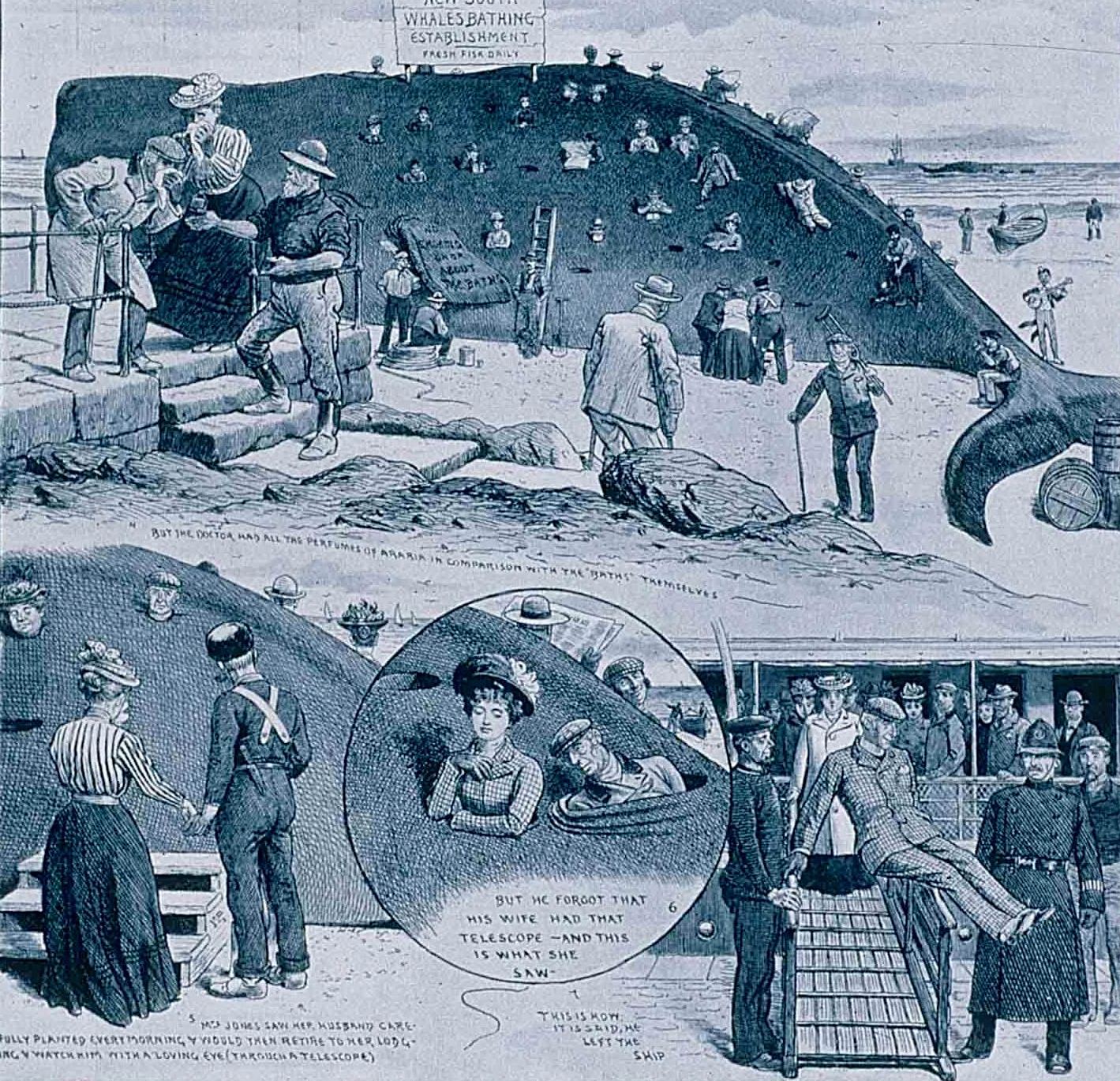
The year is drawing to a close and we have enjoyed investigating, researching and sharing parts of the museum’s collection with you. We have come across the weird and wacky, but we have also made discoveries that have stopped us in our tracks and demonstrated the enormous depth of the collection.
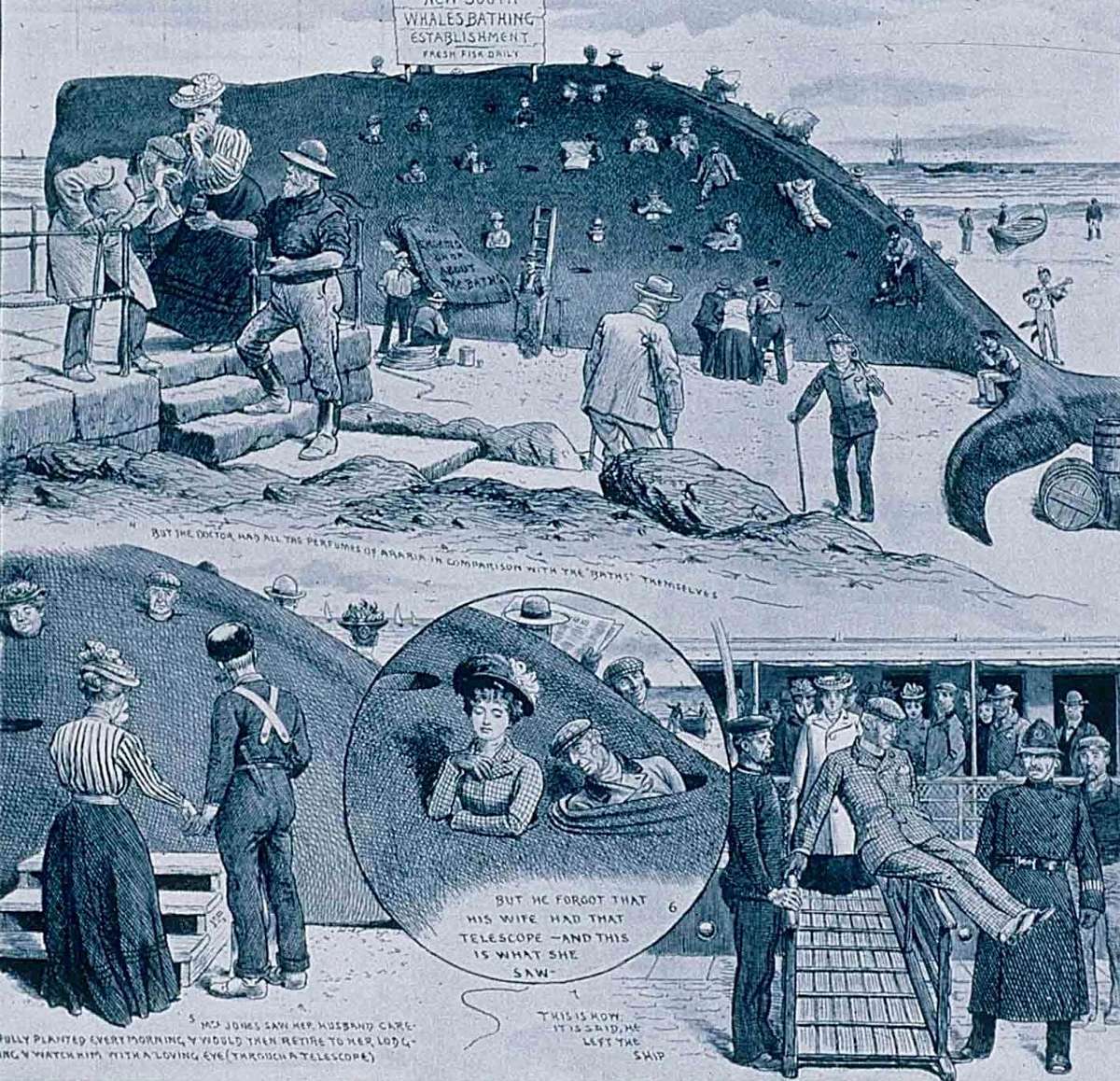
The Whale Cure for Rheumatism in Australia (1902)
Printed in The Graphic
ANMM Collection
Did you know that you can cure rheumatism by bathing for several hours in a dead whale? This was something we learned when we came across an article in the collection titled Cure for Rheumatism in Australia (1902). Part of the instructive caption reads:
While the interior of the carcass still retains a little warmth a hole is cut through one side of the body sufficiently to admit the patient, [who] should sink in the whale’s intestines, leaving the head, of course, outside the aperture. The latter is closed up as closely as possible, otherwise the patient would not be able to breathe through the volume of ammoniacal gases…
The article goes on to say that TWENTY OR THIRTY HOURS in the carcass (at intervals) is recommended for a cure. The slightly ironic tone of the pictures (including a scene of a gentleman leaning amorously from his position in the carcass toward a young lady nearby) initially led us to believe the article was a humorous fiction, a notion that was dashed by numerous anecdotes found in newspapers of the time and photographs of a man undertaking the cure himself. Look here and here if your stomach is strong.
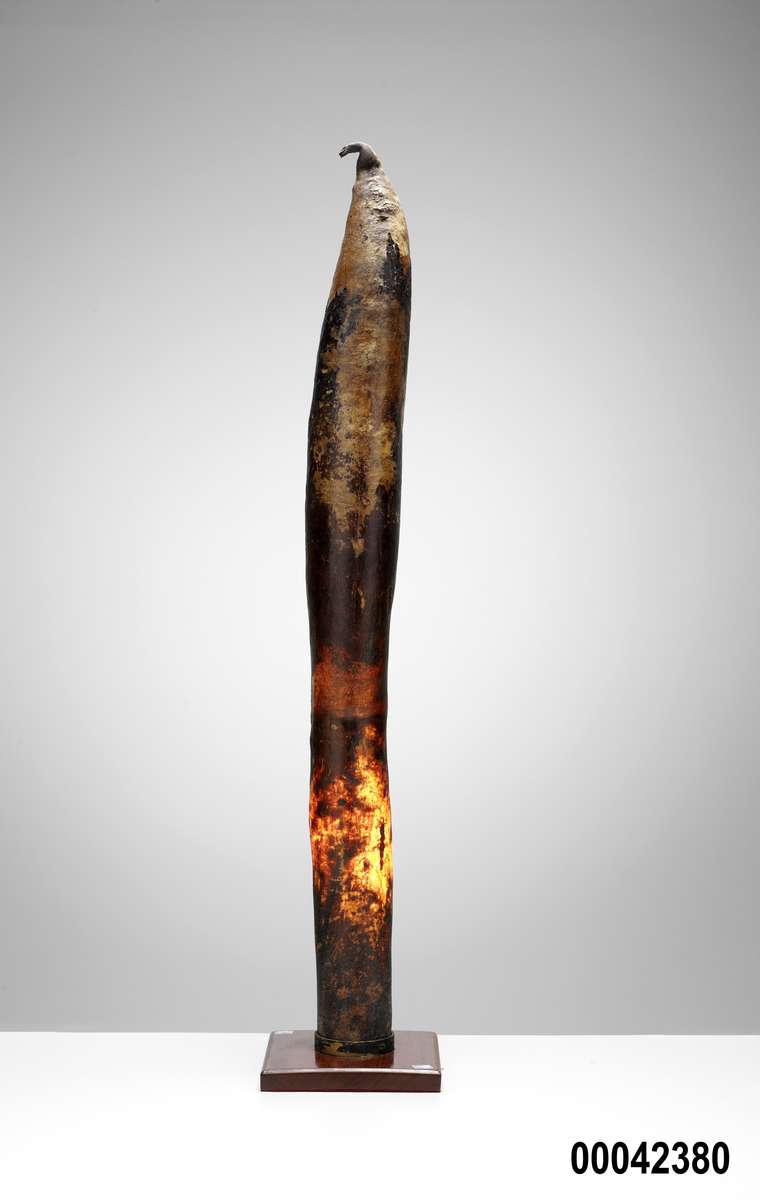
Whale penis lamp
ANMM Collection
The weirdness continues. During Ask a Curator day, curator Stephen Gapps alluded to one item in the collection we could not help but share with our followers. This electric lamp is not like any other in that it is made from the dried penis of a whale. Mounted on a wooden plinth with a standard light bulb, cord and plug, it is an unusual, if not disturbing, example of the way whale products have been souvenired and fetishized in the past.
Two of the most astounding discoveries we have made, by far, are the stories of the missing Australian film stars and three Melbourne murders.
The three Mysteries
On 5 September 1936, crowds swarmed wharf 10 in Walsh Bay to farewell the cast and crew of a new Australian ‘talkie’, Mystery Island. Among the actors photographed by Samuel J Hood was Brian Abbot who is pictured with his wife Grace Rikard Bell. They embrace each other happily; ignorant of the fact that it would be for the last time. Over a month after this photograph was taken, Brian Abbot and fellow castmate, Desmond Hay, set off on a risky voyage across the ‘stormy Tasman’ from Lord Howe Island to Sydney – the pair were never seen again.
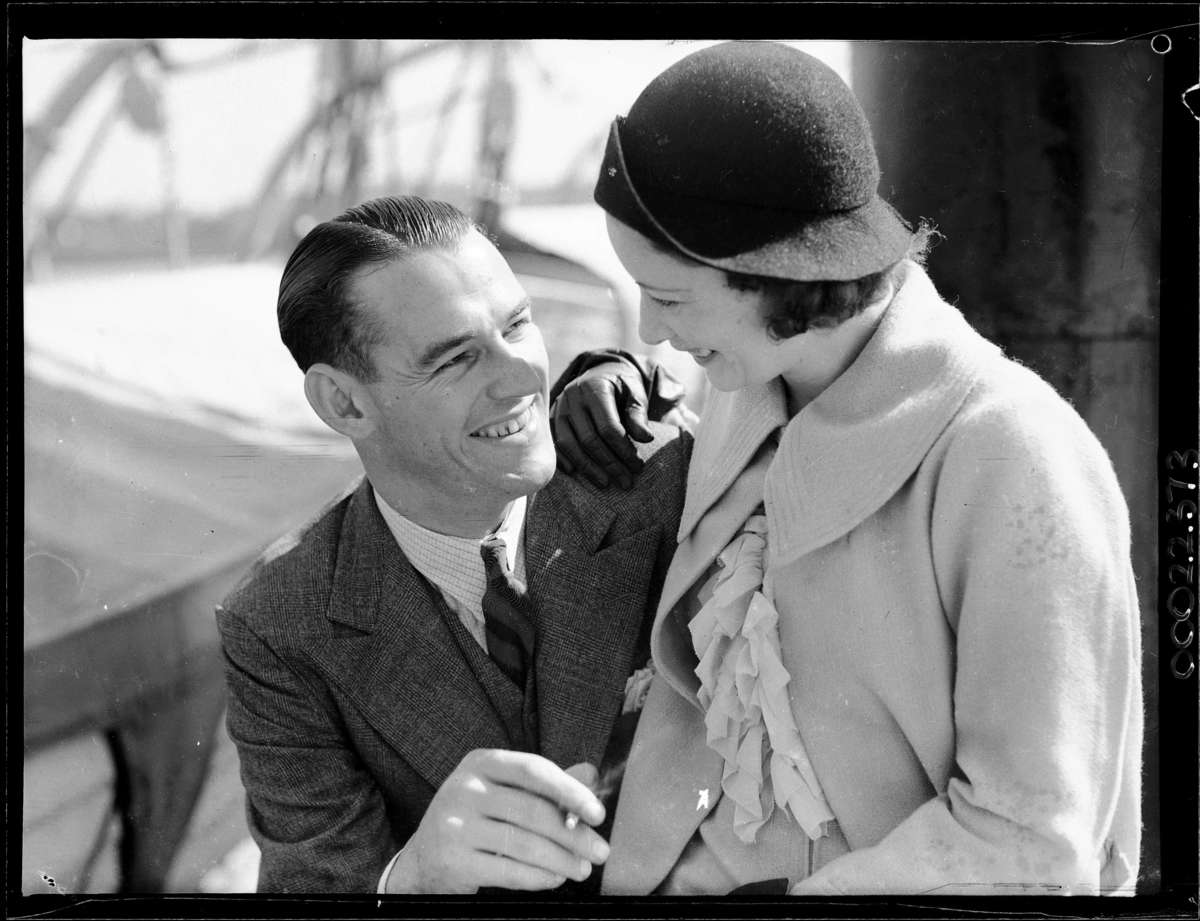
Brian Abbot and his wife Grace Rikard Bell on board SS Morinda. This photograph was also published in The Australian Women’s Weekly on 24 October 1936
Samuel J Hood Studio
ANMM Collection
The Prosecutor and the Perpetrator
Recently we also found the story of a World War II bride – an Aussie poster girl who married an American soldier when he was stationed in Melbourne. Her husband was a lawyer and was appointed prosecutor in the case of the notorious 1942 ‘Brownout Murders’. In time, we discovered that the museum held a letter written by the murderer while he was awaiting trial. It made for goose bump-inducing reading.

Detail from a letter written to a woman by Leonski while in gaol, 3 August 1942.
ANMM Collection
Did you discover things in our collection you weren’t expecting to find? Search eMuseum and Flickr and share your discovery with us.
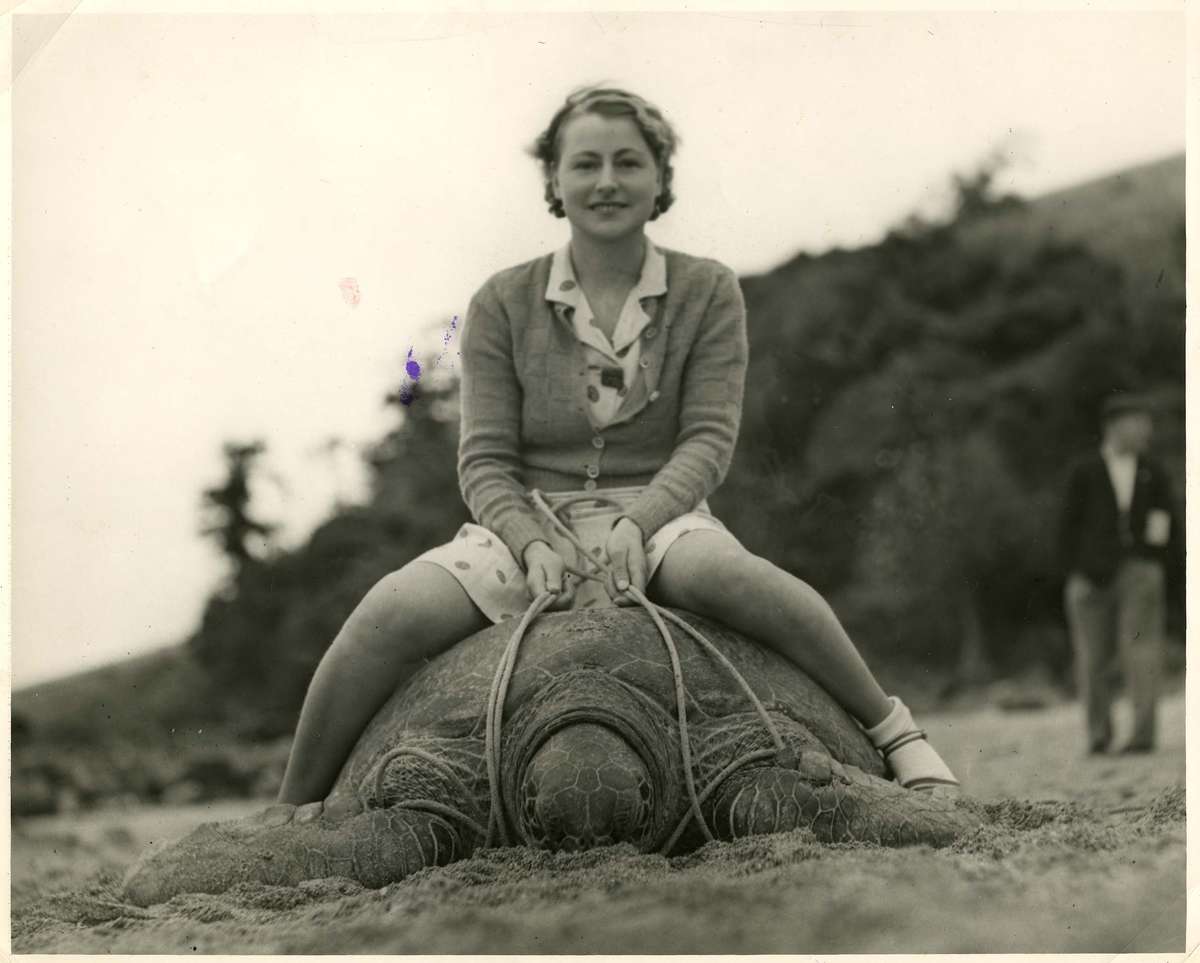
Young woman sitting astride a turtle, c 1930
ANMM Collection
Penny Hyde and Nicole Cama
Curatorial assistants
